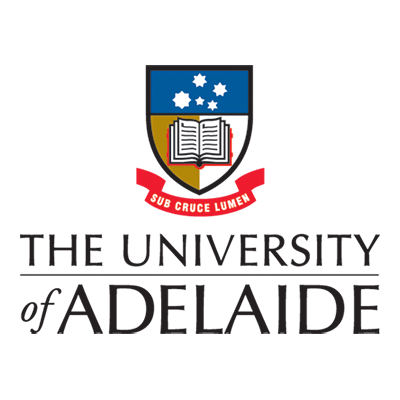Navigating the mineral demands of renewable energy

Sponsored by

Sponsored by

The worldwide move to renewable energy relies heavily on critical minerals such as rare earths and copper. But with demand predicted to exceed supply in the next decade, achieving net-zero emissions poses a considerable challenge.
Experts at the University of Adelaide are focusing their research on these minerals, which are integral to wind turbines, solar panels, and electric vehicles, to develop sustainable solutions for supply and demand alignment.
Professor Michael Goodsite from the University of Adelaide says Australia's vast resources and expertise in renewable energies position it to build a sophisticated industrial economy rooted in green transformation.
In his role as Pro Vice-Chancellor (Energy Futures) and Director of the Institute for Sustainability, Energy, and Resources, Goodsite oversees and directs “globally transformative research that overcomes complexity, drives change, and creates value for a more sustainable future”.
"Copper will be fundamental to this transition," he says. Given its indispensability in manufacturing wind turbines, solar cells, and electric vehicles, “it is fundamental to the electrification of society”.
“Copper is needed in everything electrical and there are limited substitutes,” says Goodsite. “Without copper, there is no energy transition.”
The other challenge, he says, is that “you can’t recycle copper as quickly as you’d like”, because it’s tied up in infrastructure and residential buildings such as our houses.
“S&P Global Market Intelligence projected in 2022 that annual global copper demand will nearly double from 25 million to roughly 50 million tonnes by 2035. Demand that cannot be met by discovering new deposits as long as the global average of moving from discovery to production is 16 years,” he says.
Even though Australia has the second largest copper resources in the world, it’s eighth when it comes to production. Limited by environmental and labour considerations in a way that not all countries are, Goodsite says there’s a necessity for new mining and processing methods that mitigate environmental impact.
“There’s no point in getting the copper for a green transition if you harm the environment in the process,” he says.
“Progress is being made, though, with technological innovations emerging in areas like mine electrification and mineral extraction methods.”
One such innovative approach comes from a South Australian startup, EnviroCopper, which is using a low-water mining method.
"They mine the mineral, not the ore," says Goodsite.
The process involves inserting tubes into the ground and introducing an environmentally benign liquid that binds with the copper, which is then extracted. It is "the arthroscopic surgery of mining," he says.
This method is relatively new to Australia, although there have been efforts to implement it in other places.
“It's an interesting approach,” says Goodsite. “If you were to visit the site, you'd see that it's so non-disruptive, that there are sheep grazing in the very fields where they're mining.”
Despite the challenges in meeting the copper demands of a net-zero future, Goodsite remains optimistic.
"The time lag between discovery and exploiting deposits means that we can't rely solely on new mines to meet our 2050 goals. However, this challenge also presents an opportunity to make the process faster, better, and more sustainable."
Associate Professor Carl Spandler, Director of the University’s Australian Critical Minerals Research Centre, is focusing on the formation of ore deposits of critical metals in Australia. He says there’s an impending gap between supply and demand of these critical minerals, which will be required in vast quantities for the renewable energy transition.
“Critical minerals are those we need in large quantities for the renewable energy transition for which supply is at risk,” Spandler says.
“They include rare earth minerals, which 10 years ago were exclusively sourced from China, and other minerals like cobalt and lithium, which are typically considered critical due to supply risks and rapidly increasing demand,” he says.
Spandler says that Australia is well-endowed with critical minerals, and is among the world's largest producers of lithium and rare earths. He also says there are substantial reserves of nickel, cobalt, and other essentials for batteries.
“Australia is the only place in the world with significant resources of all the materials needed to make batteries. It’s a no brainer we should be manufacturing batteries in Australia for large scale storage and electric vehicles,” he says.
However, translating this potential into reality presents its own challenges.
Spandler says that the nature of the Australian continent presents unique challenges, particularly during the search and discovery phase. The remoteness of regions and the fact that it’s "blanketed by young sediment" make it more difficult.
“The significant time between discovery and production is because our regulatory environment is naturally careful around environmental, social and labour impact analysis. There is an opportunity, given technological advancements, to do this faster without compromising any of the above. Our efforts include working with our stakeholders to improve this.”
Technological advancements, such as remote sensing with satellites and real-time data acquisition in the field, are streamlining processes and enhancing efficiency.
There is a pressing need, though, for regulatory reform and for training the future workforce, he says.
“I’m optimistic about the acceleration of the approval process because, realistically, it has to happen.
“If you consider the COVID-19 situation, we thought we'd be stuck without vaccines for many years due to long timelines of vaccine development in the past. But with collective effort, we developed vaccines within a year. It was a crisis that drove us.
“There’s a real need to act quickly. While it’s not a crisis yet, it may well become one,” he says.
Sam Duncan
The Australian